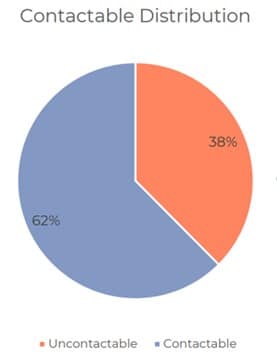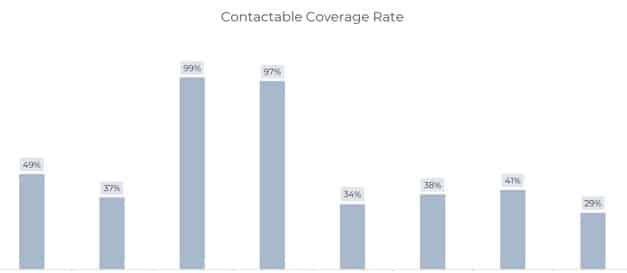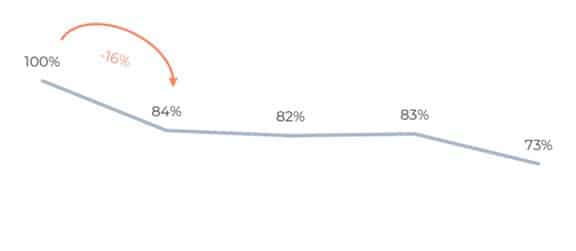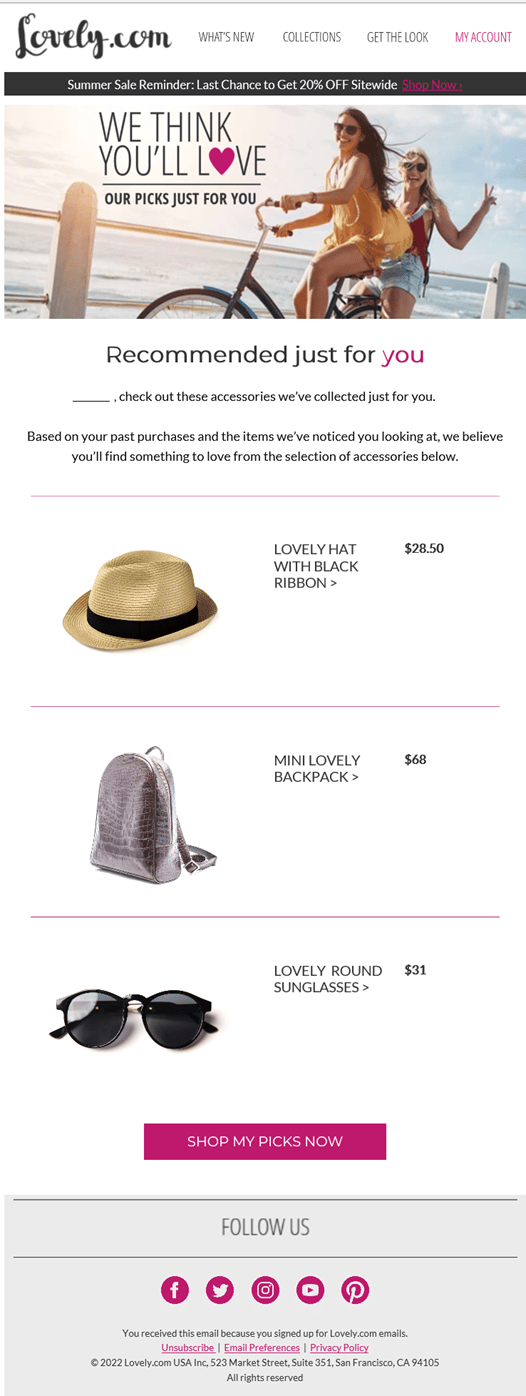
AI and the Retail Marketer’s Future
How AI transforms strategy and processes, driving the adoption of Positionless Marketing
Exclusive Forrester Report on AI in Marketing

Email welcome journeys are perhaps the most important email campaigns you will send out to customers. As the name suggests, they welcome customers to your brand, so you want to make a great impression. These welcome emails want to convey who and what you are, your values, and “what’s in it for them” when they engage with your brand.
Ultimately, as you welcome customers to your brand, you want to show appreciation and affirm the wisdom of their choice of your brand over the many others competing for their attention and custom. So, it better be good.
Your welcome journey also provides the opportunity to learn more about customers’ preferences, shopping habits, and behavior, which is crucial to nailing personalization. Bottom line… some brands have a hard time mastering their email welcome journeys. So, when analyzing your welcome journey, here are a few things and best practices to consider.
In retail, welcome journeys tend to begin after a customer makes his or her first purchase with your brand, as they will provide their contact details when making a purchase or registering an account.
To find out whether your customers are considered “contactable”, analyze what percentage have allowed email communications when signing up. This in turn will show you how many customers refused to receive emails – providing you with useful data on customers you’re “missing”. You can try to communicate with these customers on alternative channels.
Problem: Many customers may be uncontactable.
Solution: When customers are uncontactable via email or SMS, you can try and engage with them through a variety of alternative channels, including popups, in-app messages, push notifications, Facebook campaigns, and more.

The coverage rate represents the percentage of your entire customer base targeted via a campaign in a specific period. For example - check how many customers have received at least one email per month. You can discover different monthly coverage trends and understand them.
Problem: Your coverage rates are low/inconsistent and/or you may not be contacting your customers on a regular basis.
Solution: Look at the coverage rate of your contactable customers and analyze how many of your marketing campaigns are actually reaching your target audience.

To find out if customers unsubscribe during your welcome journey, run an analysis on customers who were in your email list for the first email of your welcome campaign. Then check how many of them continue to receive subsequent campaigns.
This will help you detect points of significant declines (after which email they unsubscribe), providing valuable insights as to which campaign elements you need to change/update.
Problem: Many customers unsubscribe after they receive the first email of your welcome campaign.
Solution: Check which campaign leads to a higher unsubscribe rate and examine how it can be revised/improved. This could be any one or a combination of text, visuals, promotions, banners, CTAs, subject lines, etc.

Since welcome emails are sent on an ongoing basis, it’s crucial that you review them regularly.
Make sure the headline and subject line are consistent with your message – or that they contain the promotion. If there’s one thing that really annoys customers, it’s being misled or confused into reading something irrelevant and of no use or interest to them.
Problem: Many retail brands simply have an ongoing email cycle that they send to customers for months or even years.
Solution: Check your email cycles, especially your welcome journey, on an ongoing basis to ensure it's relevant, timely, and up to date.
Here’s an example of an email from a leading retail brand that nailed its personalization and consistency regarding the subject line and corresponding body of the email itself.
The subject line was: Our top picks for you are here!

In your welcome journey, not all your emails will aim to generate an uplift, increase in orders, or order amount. Some will look to promote brand awareness, convey your values, and encourage loyalty.
For example, if a campaign aims to increase brand awareness, check your open rates (percentage of customers who opened the email) or click rates (percentage of customers who clicked on a link inside the email). Although customer loyalty cannot be measured in numbers, it definitely generates revenue over time.
Problem: You want to see an uplift even though your email doesn’t include a special promotion or other element to drive sales.
Solution: If a campaign aims to increase brand awareness, check your open rates, or click rates which are better indicators than just the uplift generated.
Pro Tip: Data shows that relevant videos generate a higher click rate. An Optimove client added an educational video to an email in its welcome journey, and it generated around 50% of the clicks!
Now that you’ve asked yourself these five questions here’s another three tips from us:
1. A/B test: Optimize your campaigns by testing each email's text, promotions, visuals, and subject lines. Try playing with the order of your emails in the welcome journey to create an alternate sequence.
2. Personalize: Rather than having a generic welcome journey for all your customers, update your welcome campaigns according to customer data. For instance, create a personalized promotion that displays relevant content for each customer segment you create.
3. Repeat: When the welcome journey ends, customers should enter a subsequent journey. So, continue to engage consistently long after the onboarding journey ends.
Exclusive Forrester Report on AI in Marketing
In this proprietary Forrester report, learn how global marketers use AI and Positionless Marketing to streamline workflows and increase relevance.


Roni is a Marketing Operations Manager in Optimove's Marketing team.
As the Marketing Operations Manager, Roni specializes in data analysis to support internal teams and marketing strategy, digital lead generation to drive and optimize new opportunities, and AI-driven operations that enhance marketing efficiency and performance. Roni holds a dual degree in Psychology and Business from Reichman University (IDC Herzliya).


